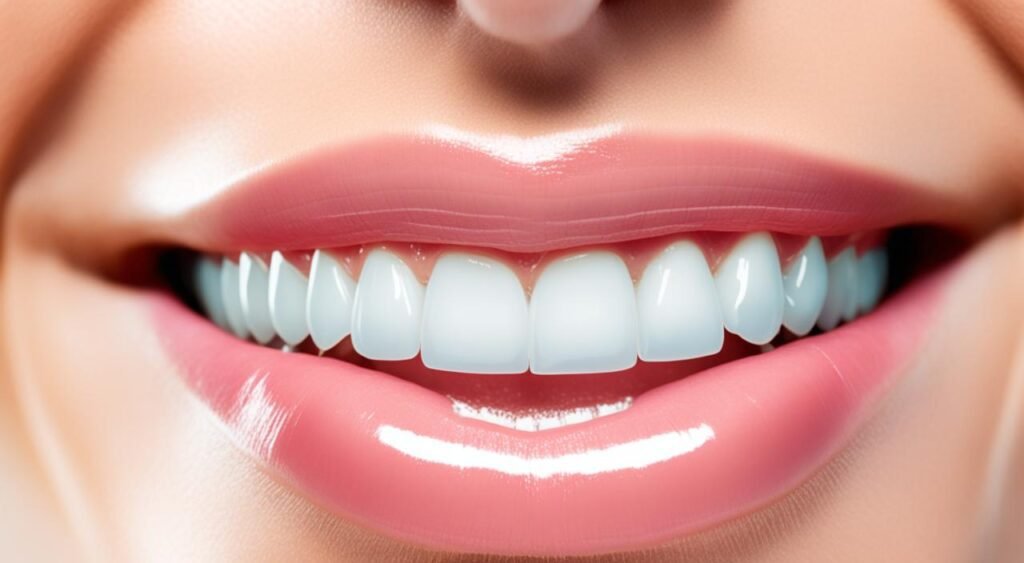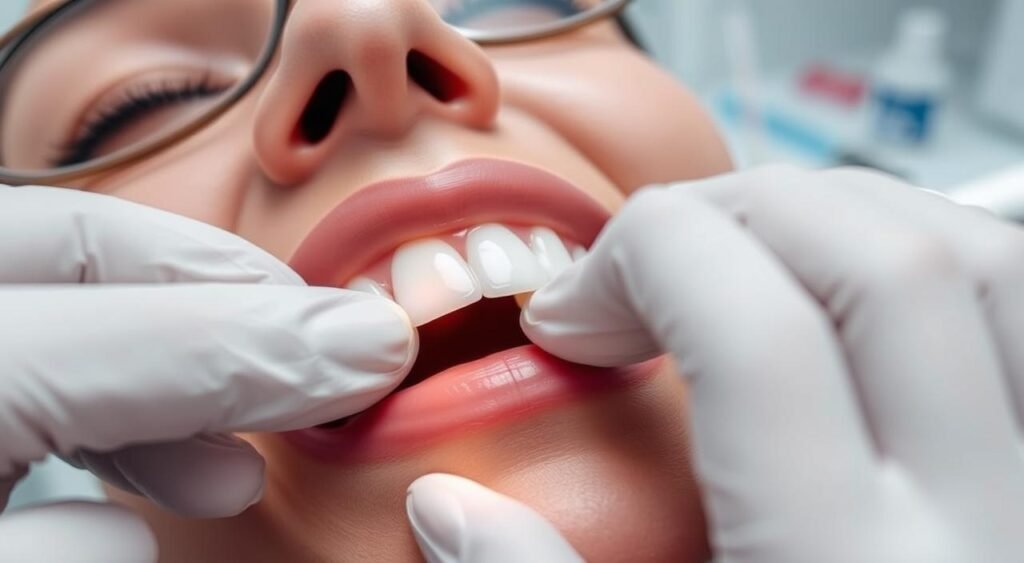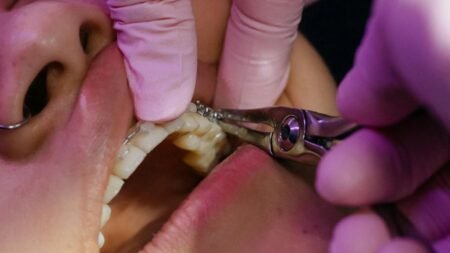Have you ever wondered why choosing between dental implants and veneers is so tough? It’s a big decision that affects your smile and confidence. This article will look into cosmetic dentistry options, focusing on the unique benefits and steps of each treatment. When it comes to deciding between dental implants vs veneers, understanding their differences can help you make an informed choice that best suits your needs.
You’ll learn about dental implants and veneers, helping you make a choice that’s right for you. If you want to improve your smile or look at other dental options, this guide has the info you need.
Understanding Dental Implants
Dental implants are a top choice for people with missing teeth. They work by placing titanium posts into the jawbone. This creates a strong base for teeth that work just like your own.
What Are Dental Implants?
Dental implants have three main parts: a titanium post, an abutment, and a crown. The titanium post goes into the jawbone during surgery. It holds the dental piece in place. The abutment connects to the post and the crown, which looks like a real tooth.
Dental Implant Benefits
Looking into dental implants shows many advantages over other tooth replacements. The main benefits are:
- Permanent Solution: They can last a lifetime with the right care.
- Bone Health Maintenance: They keep the jawbone strong, preventing bone loss.
- Enhanced Oral Hygiene: They don’t need special cleaning, making daily care simpler.
- Improved Stability: They stay put better than dentures, reducing movement during eating or talking.
- Natural Appearance: They look very much like real teeth, offering a better look.
Dental Implants vs Dentures
Choosing between dental implants and dentures depends on several things. Dentures are removable and might need frequent changes. Dental implants, on the other hand, are a more permanent choice. Here’s how they compare:
| Feature | Dental Implants | Dentures |
|---|---|---|
| Stability | Highly stable; integrated into the jaw | May slip or move during use |
| Care | Brush and floss like natural teeth | Requires special cleaning procedures |
| Longevity | Lasts a lifetime | Needs replacement every 5-10 years |
| Bone Preservation | Prevents bone loss | May contribute to bone deterioration |
| Cost | Higher initial investment, potentially lower long-term costs | Lower upfront cost, ongoing replacement expenses |
Knowing these differences can help you make a better choice for your dental health.

Exploring Veneers
Veneers are a key part of cosmetic dentistry. They make your smile look better with their natural look and flexibility. These thin shells, made of porcelain or composite resin, cover the front of your teeth. They fix issues like stains, gaps, or small teeth misalignments.
What Are Veneers?
Veneers are custom-made to fit your teeth, giving you a perfect smile. They look just like your natural teeth enamel, making your smile bright and even. Many people choose veneers for a better look without big dental work.
Veneer Procedure Overview
The veneer process starts with a meeting to talk about what you want. Here’s what happens next:
- Consultation: A dentist looks at your teeth and talks about what you want.
- Tooth Preparation: A bit of enamel might be removed for a good fit.
- Impression Making: Your teeth are molded to make custom veneers.
- Bonding: When the veneers are done, they’re stuck to your teeth with special glue.
This detailed planning and doing keeps most of your tooth and greatly improves how you look.
Veneers vs Crowns
It’s important to know the difference between veneers and crowns for cosmetic fixes. Both improve your teeth’s look, but they’re used in different ways:
| Feature | Veneers | Crowns |
|---|---|---|
| Coverage | Front surface only | Entire tooth |
| Tooth Structure Preservation | Preserves more structure | Removes more enamel |
| Common Uses | Cosmetic improvements | Restoration and support |
| Longevity | 5-15 years | 10-15 years or more |

Knowing the differences between veneers and crowns helps you make the best choice for your smile.
Cosmetic Dentistry Options
Cosmetic dentistry offers many ways to make your teeth and smile look better. Knowing about these options can help you choose the right path for your perfect smile. Each treatment is designed for specific needs, offering unique benefits.
Smile Enhancement Solutions
There are several ways to improve your smile. You can try teeth whitening, bonding, or orthodontic work. These treatments fix common problems like stains, gaps, or crooked teeth.
- Teeth Whitening: Brightens and removes stains for a more vibrant smile.
- Bonding: Repairs chips or gaps using a tooth-colored resin.
- Orthodontics: Straightens teeth and enhances bite function.
Dental Makeover Choices
Getting a dental makeover can change your life, combining several treatments for full results. You can pick from veneers, dental implants, and contouring to boost your smile. Knowing how these options work together can help you get the best results and satisfaction.
| Treatment | Benefits | Ideal Candidates |
|---|---|---|
| Teeth Whitening | Effective stain removal and instant brightness. | Individuals with yellowing or stained teeth. |
| Veneers | Transforms shape and size of teeth; provides natural appearance. | Those with chipped, irregular, or discolored teeth. |
| Dental Implants | Restores function and aesthetics of missing teeth. | Adults seeking permanent solutions for tooth loss. |
Dental Restorations Comparison
Choosing the right dental restoration is key to your oral health. Each type has its own set of differences that affect your choice. This section will explore various tooth replacement options. It will highlight their advantages and disadvantages.
Dental Procedure Differences
Dental restorations differ in how complex the procedure is and how long it takes to recover. For example, dental implants need surgery, while bridges might just reshape nearby teeth. Here are some main differences:
- Invasiveness: Implants need surgery, but veneers and crowns are less invasive.
- Recovery Time: Implants take months to heal, while other restorations have a shorter recovery.
- Durability: Implants can last a lifetime, but bridges or dentures might need replacing over time.
Tooth Replacement Options
Looking at different tooth replacement options helps you find what suits you best. Below is a table that compares popular options:
| Restoration Type | Procedure | Longevity | Cost | Pros | Cons |
|---|---|---|---|---|---|
| Dental Implants | Surgical placement | 10+ years | High | Long-lasting, looks natural | Invasive, needs several visits |
| Bridges | Reshaping nearby teeth | 5-15 years | Moderate | Restores function, easy to get | Needs healthy teeth next to it |
| Dentures | Fitting and adjustments | 5-10 years | Low | Less invasive, easy to remove | Less stable, needs upkeep |
Knowing about dental restorations helps you make a smart choice for your oral care. Look at the differences in procedures and think about which options fit your lifestyle and dental needs.
Cost Considerations
When choosing between dental implants and veneers, knowing the costs is key. Dental implants are often more expensive than veneers. This affects your budget. Let’s look at the costs of these dental treatments.
Dental Implants Cost
Dental implants can cost between $3,000 to $4,500 per implant. The price changes based on your location, the dentist’s skills, and your specific needs. This price includes the implant, abutment, and the crown.
Veneers vs Implants Cost
Veneers are cheaper than implants. They cost between $800 and $2,500 per veneer. This depends on the material and the dentist’s fees. Veneers are more affordable than implants for cosmetic dentistry.
Veneer Implants Cost
Veneer implants combine the costs of veneers and implants. Financing can help with the high upfront costs. Check your insurance to see if it covers part of the treatment.
Dental Implants vs Veneers: Which is Right for You?
Choosing between dental implants and veneers depends on your unique situation. Each option has its own benefits and might suit your needs better. Think about these factors to help decide.
Factors to Consider When Choosing
Here are key points to consider:
- Dental Health: Look at your current oral health. Dental implants need solid bone, while veneers work well for small flaws.
- Aesthetic Goals: Think about what you want to improve. Do you want a long-lasting fix or something less invasive?
- Longevity: Dental implants last longer than veneers. Think about how important long-term results are to you.
- Cost: Compare the costs of implants and veneers. Implants are pricier upfront but can save money over time.
- Recovery Time: Know how long each treatment takes to heal. Implants heal slower than veneers, which might matter to you.
Considering these points can help you pick the best dental treatment for you. You’ll be able to make a choice that meets your needs and wants.
| Factor | Dental Implants | Veneers |
|---|---|---|
| Durability | Long-lasting (10-15 years or more) | Shorter lifespan (5-10 years) |
| Invasiveness | Surgical procedure required | Non-surgical, minimally invasive |
| Cost | Higher upfront investment | Lower initial cost |
| Recovery | Longer recovery time | Minimal recovery needed |
| Maintenance | Requires regular dental care | Easier maintenance, but may require replacements |
Conclusion
Dental implants and veneers are both great for making your smile better and fixing dental issues. It’s key to know the main differences and similarities to pick the right cosmetic dentistry option. Dental implants are a lasting fix for missing teeth, while veneers are quicker for fixing looks.
Think about how long they last, how much upkeep they need, and the total cost when choosing your dental makeover. Each option has its pros and cons, based on your dental health and looks goals. By looking at these factors, you can pick the best choice for you.
Starting your path to a confident smile means making smart choices. If you’re deciding between dental implants and veneers, focus on what you want for your dental look. Take the time to see which one fits your needs best.
FAQ
What are the main differences between dental implants and veneers?
Dental implants are permanent and replace missing teeth with titanium posts in the jawbone. Veneers are thin shells that cover the front of existing teeth for aesthetics. Implants replace teeth, while veneers improve the appearance of existing teeth.
What are the benefits of dental implants?
Dental implants help maintain jawbone health, look and feel natural, improve oral hygiene, and reduce the risk of gum disease. They are more stable and durable than dentures.
What does the veneer procedure entail?
The veneer procedure involves an initial consultation, preparation of the tooth, and bonding the veneer onto the tooth with a strong adhesive. This procedure keeps most of the natural tooth intact.
How do veneers compare to crowns?
Veneers cover only the front of teeth, while crowns encase the entire tooth. Crowns are typically used for significantly damaged teeth, whereas veneers are ideal for cosmetic improvements and require less invasive procedures.
What are the costs associated with dental implants and veneers?
Dental implants typically cost $3,000 to $4,500 per tooth, while veneers range from $800 to $2,500 per tooth, depending on the material and dentist. Total costs vary based on treatment plans and location.
How do I decide between dental implants, veneers, and dentures?
The choice depends on your oral health, desired appearance, and budget. Implants are ideal for replacing missing teeth, veneers enhance the look of existing teeth, and dentures are a removable option for replacing multiple teeth.
Are there any financing options available for dental implants and veneers?
Yes, many dental clinics offer payment plans and third-party financing options for implants and veneers. Additionally, some insurance plans may provide partial coverage for these procedures.
What factors should I consider when choosing between implants and veneers?
Consider your oral health, desired aesthetic outcome, durability of the treatment, and overall costs. Consulting with a dentist will help you determine the most suitable option for your needs.








